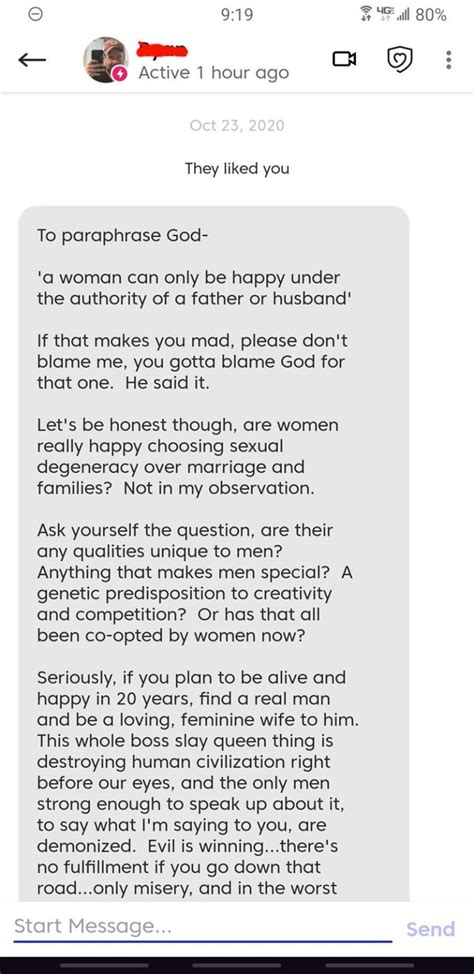
A TikTok user’s discovery of a $15 vintage dress at a thrift store has ignited a massive online debate involving over a million viewers, prompting discussions about consumerism, fast fashion, and the ethics of reselling vintage clothing for profit.
The controversy erupted after a TikToker, known as @mothgirl_ finds and showcases a vintage Gunne Sax dress for just $15. The video quickly went viral, amassing over a million views and triggering intense discussions in the comment section about whether it’s ethical to purchase and resell thrifted vintage items at significantly higher prices. The crux of the debate centers on accessibility, affordability, and the preservation of vintage clothing for those who genuinely appreciate and wear them versus those who profit from them. The incident has illuminated broader societal issues concerning thrifting culture, sustainability, and ethical consumption within the fashion industry.
The initial video showcased the TikTok user’s excitement over finding the vintage Gunne Sax dress at such a low price. Gunne Sax, a popular brand from the late 1960s to the 1980s, is known for its romantic and prairie-style dresses, often highly sought after by vintage enthusiasts. These dresses, when in good condition, can fetch hundreds of dollars online, making the $15 price tag a particularly noteworthy find. The creator’s follow-up video revealed she intended to resell the dress, further fueling the controversy.
Viewers quickly took to the comments section to express their opinions, with many accusing the TikToker of contributing to the rising prices of thrifted vintage clothing. Critics argued that by buying up these items and reselling them for profit, she was making it harder for people who genuinely need affordable clothing to find it. Some commenters pointed out that low-income individuals often rely on thrift stores for their wardrobes, and the increasing popularity of thrifting, driven by social media trends, is driving up prices and reducing availability. This concern reflects the sentiment that reselling targets vintage fashion, making it accessible to a selected wealthy population, while also limiting it for the more disadvantaged population.
“I think it’s really unfair to buy things from thrift stores just to resell them for a profit,” one commenter wrote. “Thrift stores are supposed to be a resource for people who can’t afford to buy new clothes.” This sentiment was echoed by many others, who argued that reselling vintage clothing is a form of gentrification, pushing out those who have traditionally relied on thrift stores.
On the other hand, some viewers defended the TikToker, arguing that she was simply engaging in a legitimate form of commerce. They pointed out that reselling vintage clothing is a common practice, and that by curating and making these items available to a wider audience, she was providing a valuable service. Some also argued that she was helping to keep vintage clothing out of landfills, contributing to a more sustainable fashion cycle.
“There’s nothing wrong with reselling vintage clothing,” one defender commented. “It’s a way to give these items a new life and make them accessible to people who might not otherwise be able to find them.” Others noted that the TikToker was putting in the effort to clean, repair, and market the dress, justifying a higher price point.
The debate also touched on the broader issue of fast fashion and its environmental impact. Critics argued that the reselling of vintage clothing, while seemingly more sustainable than buying new fast fashion items, still contributes to a culture of overconsumption. They argued that true sustainability requires reducing overall consumption, rather than simply shifting consumption patterns.
“We need to move away from this idea that buying and selling is the only way to participate in fashion,” one commenter argued. “True sustainability means buying less, repairing what we have, and valuing clothing for its longevity, not just its trendiness.”
The controversy surrounding the $15 Gunne Sax dress highlights the complex and often contradictory attitudes towards thrifting, vintage fashion, and ethical consumption. While thrifting is often seen as a sustainable and affordable alternative to fast fashion, its increasing popularity has raised concerns about accessibility and affordability for low-income individuals. The debate also underscores the tension between individual entrepreneurship and the collective good, as well as the challenges of navigating ethical consumption in a complex and globalized economy.
The rise of social media has further amplified these tensions, as platforms like TikTok have made thrifting and vintage fashion more visible and desirable than ever before. This increased visibility has both positive and negative consequences, as it can raise awareness about sustainable fashion but also contribute to the commodification of vintage clothing and the displacement of low-income shoppers.
In recent years, the thrifting industry has undergone a significant transformation. Once a haven for budget-conscious shoppers and those seeking unique, pre-owned items, thrift stores have become increasingly mainstream, attracting a wider range of consumers, including fashion enthusiasts and resellers. This shift has been fueled by growing awareness of the environmental and social costs of fast fashion, as well as the desire for more sustainable and ethical consumption practices.
The rise of online platforms like Depop, Poshmark, and ThredUp has further accelerated the growth of the secondhand market, making it easier than ever for people to buy and sell used clothing. These platforms have created a vibrant community of thrifters and resellers, who often curate and style vintage clothing for a wider audience.
However, this increased popularity has also brought new challenges and ethical dilemmas to the thrifting industry. As more people flock to thrift stores in search of vintage treasures, prices have begun to rise, and the availability of affordable clothing for low-income individuals has decreased. This phenomenon, often referred to as “thrift store gentrification,” has sparked a debate about the role of resellers and the impact of thrifting on vulnerable communities.
The debate surrounding the TikToker’s $15 find highlights the need for a more nuanced understanding of thrifting and its ethical implications. While reselling vintage clothing can be a legitimate form of commerce and contribute to a more sustainable fashion cycle, it is important to consider the potential impact on low-income individuals and the need to ensure that thrifting remains accessible to those who rely on it for affordable clothing.
Possible solutions include supporting thrift stores that prioritize serving low-income communities, advocating for policies that promote affordable housing and economic opportunity, and promoting a culture of mindful consumption that values quality, durability, and ethical production practices. Ultimately, addressing the challenges of thrifting requires a collective effort from consumers, resellers, policymakers, and the fashion industry as a whole.
The Gunne Sax brand itself has a unique history, adding another layer of complexity to the debate. Founded in San Francisco in 1967 by Carol Miller, Gunne Sax quickly gained popularity for its romantic and Victorian-inspired designs. The brand’s dresses, often featuring lace, ruffles, and floral prints, became a symbol of the bohemian counterculture of the late 1960s and early 1970s.
Gunne Sax dresses were particularly popular among young women who were looking for an alternative to the mainstream fashion trends of the time. The dresses were often seen as a symbol of femininity, individuality, and a rejection of consumerism. They embodied a vintage fashion aesthetic that attracted a wide audience.
The brand’s popularity peaked in the 1970s and 1980s, but it eventually declined in the late 1990s. The brand was sold several times and eventually discontinued in 2016. However, Gunne Sax dresses remain highly sought after by vintage collectors and fashion enthusiasts, and they are often sold for hundreds of dollars online.
The fact that the TikToker found a Gunne Sax dress for only $15 underscores the rarity and value of these vintage items. It also highlights the potential for resellers to profit from the scarcity and demand for vintage clothing.
The debate surrounding the TikToker’s find also raises questions about the definition of “vintage.” While there is no universally agreed-upon definition, vintage clothing is generally considered to be items that are at least 20 years old. However, some people use the term more loosely to refer to any clothing that is pre-owned or that has a retro aesthetic.
The value of vintage clothing can vary widely depending on factors such as brand, condition, rarity, and style. Some vintage items, such as designer dresses or rare collectibles, can be worth thousands of dollars, while others may be worth only a few dollars.
The rise of vintage fashion has been fueled by several factors, including the growing awareness of the environmental and social costs of fast fashion, the desire for more unique and individualistic styles, and the nostalgia for past eras. Vintage clothing offers a way to express personal style while also reducing waste and supporting a more sustainable fashion cycle.
However, the increasing popularity of vintage fashion has also led to concerns about authenticity and ethical sourcing. As the demand for vintage clothing has grown, so has the market for counterfeit and misrepresented items. It is important to be cautious when buying vintage clothing and to do your research to ensure that you are getting a genuine and ethically sourced item.
In addition to the environmental and ethical considerations, the debate surrounding the TikToker’s find also touches on issues of cultural appropriation. Some critics have argued that the reselling of vintage clothing, particularly items that are associated with specific cultural groups, can be a form of cultural appropriation. They argue that by profiting from these items, resellers are commodifying and decontextualizing cultural heritage.
For example, some commenters have pointed out that Gunne Sax dresses, while popular among a wide range of women, were often inspired by traditional ethnic clothing styles. They argue that by reselling these dresses without acknowledging their cultural origins, resellers are perpetuating a form of cultural appropriation.
The issue of cultural appropriation is particularly complex in the context of vintage fashion, as many vintage items have historical and cultural significance. It is important to be mindful of the cultural origins of vintage clothing and to avoid perpetuating harmful stereotypes or misrepresentations.
The controversy surrounding the TikToker’s $15 find highlights the need for a more critical and nuanced understanding of thrifting, vintage fashion, and ethical consumption. While these practices can be a positive force for sustainability and social justice, it is important to be aware of the potential challenges and ethical dilemmas that they can pose. By engaging in mindful consumption, supporting ethical businesses, and advocating for policies that promote social and environmental justice, we can help to create a more sustainable and equitable fashion industry.
The incident also underscores the power of social media to amplify and shape public opinion. The TikTok video quickly went viral, sparking a debate that involved over a million viewers. This demonstrates the ability of social media platforms to mobilize public opinion and to hold individuals and businesses accountable for their actions.
However, it also highlights the potential for social media to be used to spread misinformation and to engage in online harassment. In the case of the TikToker, some commenters engaged in personal attacks and name-calling, which is never acceptable.
It is important to use social media responsibly and to engage in respectful and constructive dialogue, even when we disagree with others. Social media can be a powerful tool for social change, but it is important to use it in a way that promotes understanding, empathy, and respect.
The debate surrounding the TikToker’s find also raises questions about the role of influencers and content creators in shaping consumer behavior. Influencers have a significant impact on the products and services that people buy, and they have a responsibility to promote ethical and sustainable consumption practices.
In the case of the TikToker, some viewers argued that she should have used her platform to educate her followers about the ethical implications of reselling vintage clothing. They argued that she had a responsibility to use her influence for good and to promote a more sustainable and equitable fashion industry.
Influencers have a unique opportunity to shape consumer behavior and to promote positive social change. They should use their platforms responsibly and to promote ethical and sustainable consumption practices.
The controversy surrounding the TikToker’s $15 find serves as a reminder that even seemingly small actions can have a significant impact. The decision to buy and resell a vintage dress may seem insignificant, but it sparked a debate that involved over a million people and raised important questions about consumerism, sustainability, and ethical consumption.
Every decision we make as consumers has an impact on the world around us. By being mindful of our consumption habits and by supporting ethical and sustainable businesses, we can help to create a more just and sustainable world.
Frequently Asked Questions (FAQ)
1. What exactly happened with the TikToker and the vintage dress?
A TikTok user (@mothgirl_) found a vintage Gunne Sax dress at a thrift store for $15 and posted a video showcasing her find. She then indicated she planned to resell it for a profit, which sparked a massive online debate involving over a million viewers about the ethics of reselling thrifted vintage clothing.
2. Why did the TikToker’s find cause such a controversy?
The controversy stemmed from concerns that reselling thrifted vintage items at higher prices contributes to “thrift store gentrification,” making it harder for low-income individuals who rely on thrift stores for affordable clothing to access these resources. Critics argue that it drives up prices and reduces availability for those in need.
3. What are the main arguments against reselling thrifted vintage clothing?
The main arguments include:
- Accessibility: Reselling makes it harder for low-income individuals to find affordable clothing.
- Ethical Concerns: Some see it as exploiting a resource meant for those in need.
- Gentrification: It contributes to the rising prices of thrifted items, displacing traditional shoppers.
- Consumerism: It reinforces a culture of overconsumption rather than focusing on reducing overall consumption.
4. What are the counterarguments in defense of reselling vintage clothing?
Defenders argue:
- Legitimate Commerce: It’s a valid business practice.
- Wider Audience: Resellers curate and make vintage items available to people who might not otherwise find them.
- Sustainability: It keeps clothing out of landfills, contributing to a more sustainable fashion cycle.
- Added Value: Resellers clean, repair, and market the items, justifying a higher price.
5. What is the significance of the Gunne Sax brand in this controversy?
Gunne Sax dresses are highly sought-after vintage items known for their romantic and prairie-style designs. Finding one for only $15 underscores the potential for resellers to profit from the scarcity and demand for these vintage items, further fueling the debate about ethical thrifting practices. The brand’s historical association with bohemian counterculture and vintage fashion also adds another layer of complexity, as some view reselling them as a form of cultural appropriation.









